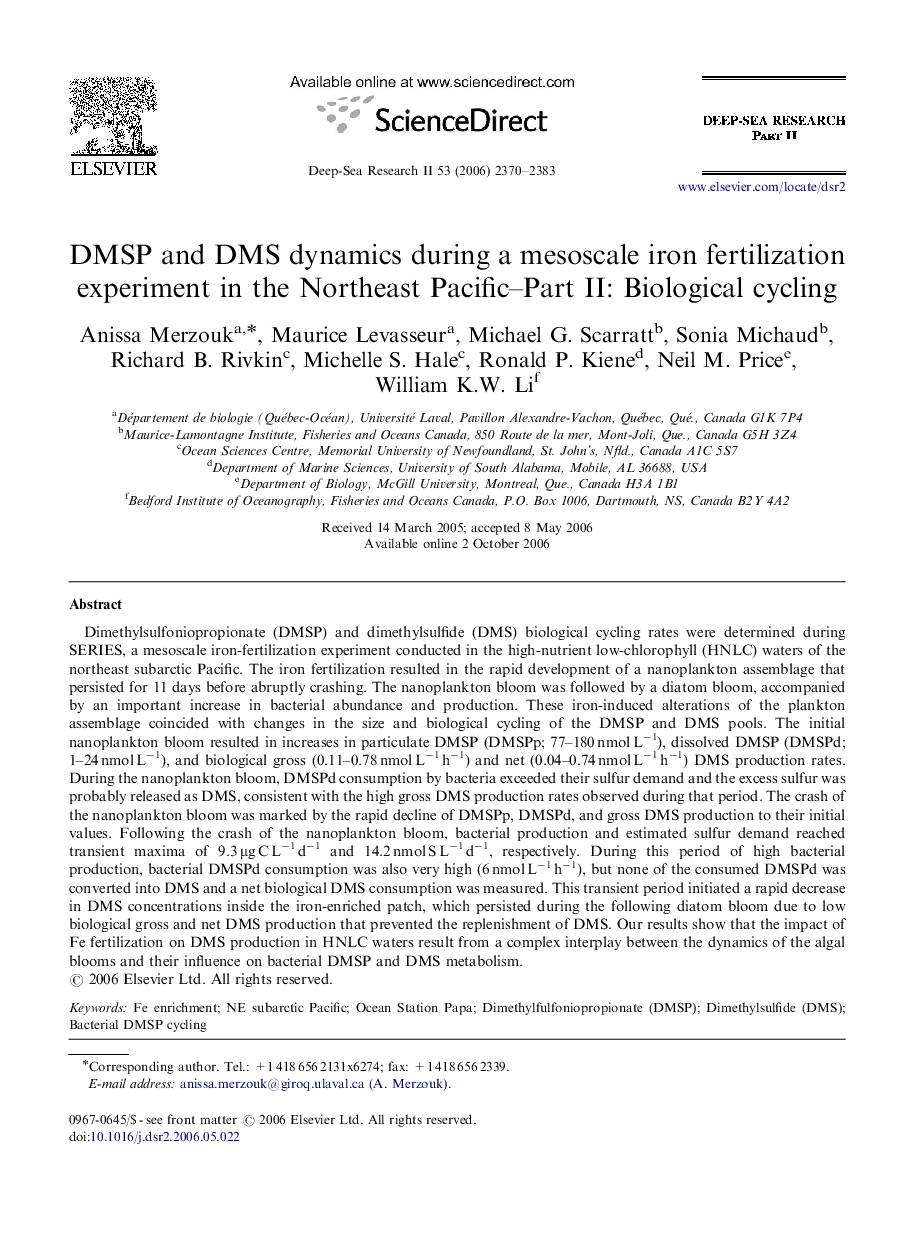| کد مقاله | کد نشریه | سال انتشار | مقاله انگلیسی | نسخه تمام متن |
|---|---|---|---|---|
| 4538364 | 1626512 | 2006 | 14 صفحه PDF | دانلود رایگان |

Dimethylsulfoniopropionate (DMSP) and dimethylsulfide (DMS) biological cycling rates were determined during SERIES, a mesoscale iron-fertilization experiment conducted in the high-nutrient low-chlorophyll (HNLC) waters of the northeast subarctic Pacific. The iron fertilization resulted in the rapid development of a nanoplankton assemblage that persisted for 11 days before abruptly crashing. The nanoplankton bloom was followed by a diatom bloom, accompanied by an important increase in bacterial abundance and production. These iron-induced alterations of the plankton assemblage coincided with changes in the size and biological cycling of the DMSP and DMS pools. The initial nanoplankton bloom resulted in increases in particulate DMSP (DMSPp; 77–180 nmol L−1), dissolved DMSP (DMSPd; 1–24 nmol L−1), and biological gross (0.11–0.78 nmol L−1 h−1) and net (0.04–0.74 nmol L−1 h−1) DMS production rates. During the nanoplankton bloom, DMSPd consumption by bacteria exceeded their sulfur demand and the excess sulfur was probably released as DMS, consistent with the high gross DMS production rates observed during that period. The crash of the nanoplankton bloom was marked by the rapid decline of DMSPp, DMSPd, and gross DMS production to their initial values. Following the crash of the nanoplankton bloom, bacterial production and estimated sulfur demand reached transient maxima of 9.3 μg C L−1 d−1 and 14.2 nmol S L−1 d−1, respectively. During this period of high bacterial production, bacterial DMSPd consumption was also very high (6 nmol L−1 h−1), but none of the consumed DMSPd was converted into DMS and a net biological DMS consumption was measured. This transient period initiated a rapid decrease in DMS concentrations inside the iron-enriched patch, which persisted during the following diatom bloom due to low biological gross and net DMS production that prevented the replenishment of DMS. Our results show that the impact of Fe fertilization on DMS production in HNLC waters result from a complex interplay between the dynamics of the algal blooms and their influence on bacterial DMSP and DMS metabolism.
Journal: Deep Sea Research Part II: Topical Studies in Oceanography - Volume 53, Issues 20–22, October–November 2006, Pages 2370–2383